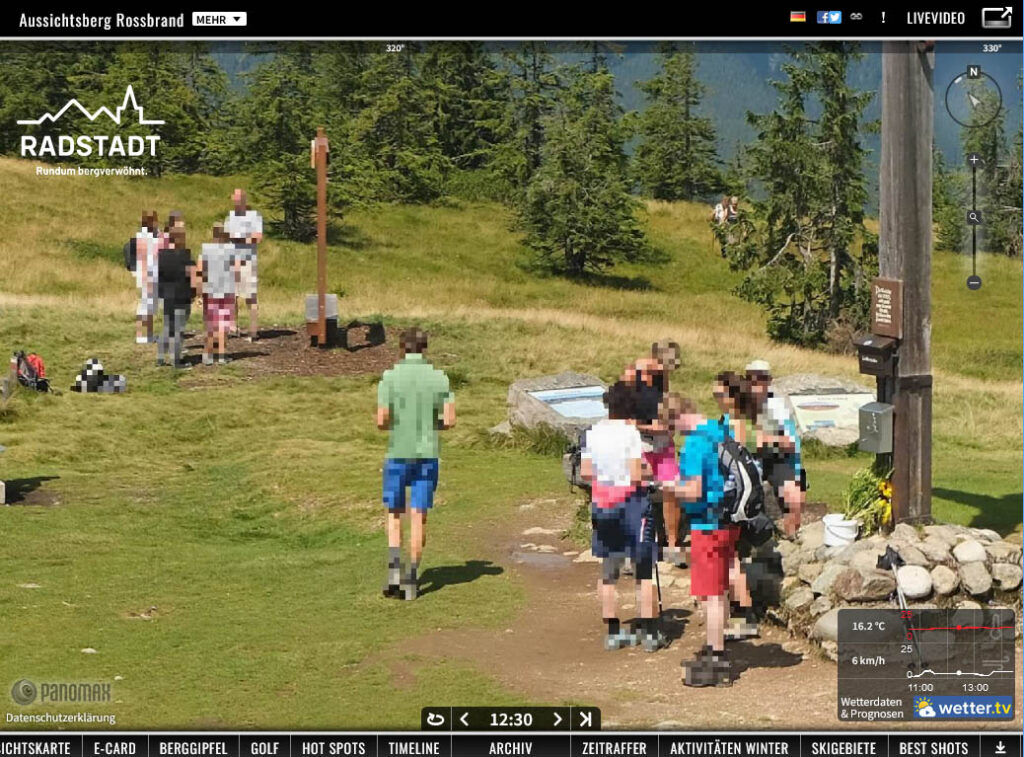Webcam by standard – GDPR-compliant
Panomax secures visitor privacy with Starline hardware
Privacy for tourists via AI and NVIDIA Tesla GPU
Webcam pro Panomax needed hardware replenishment for its AI applications in 360-degree panoramas.
As a webcam provider with hundreds of public cameras worldwide, our long-standing customer Panomax – around founder and CEO Dipl.-Ing. Klaus Mairinger – requires particularly powerful hardware. As a technology pioneer, they not only offer images for sale, but also enable special services. For example, they embed company logos in live streams through elaborate 3D rendering. In view of the great background panoramas, such as those of the Giggijoch in the Ötztal valley, the logos placed there look all the more appealing.
However, the Panomax technicians increasingly need computing power for their developments, which they are of course always happy to receive from Starline sales manager Bernd Widmaier. Just last year, it was a Supermicro SuperServer that was supposed to elicit more performance from Panomax’s latest pitch.

Keyword: GDPR
Webcams have the characteristic of wanting to be installed at particularly attractive locations. These can be mountains, ships, construction sites or airports. As a result, there are often a lot of people there and also car license numbers. For the sake of strict EU data protection, Panomax has therefore developed a process to pixelate precisely such motifs automatically and in real time. For the pixel work itself, however, Panomax needed a floating-point specialist in the form of a 32GB Tesla M10 GPU from NVIDIA -implanted in said SuperServer.
Calculated pixel by pixel
This GPU anonymizes the recognized subjects by grouping neighboring pixels within a definable square of similar color, smoothing out details and thus rendering the subject largely unrecognizable. This way, the privacy required by law remains protected and the webcam operator does not have to face lawsuits. The highlight: In contrast to the logo inserts mentioned above, which are only pushed into the picture as an overlay, the algorithm modifies the photos themselves. It is therefore also not possible to reconstruct the faces or numbers afterwards.
Performance bottlenecks eliminated
The actual pattern recognition is done by AI software called Detectron, which had already been in use for several months. With the upgrade to the better-performing Detectron2 version, however, another hardware upgrade became necessary. The new version turned out to be a real memory waster. However, Bernd Widmaier was able to help out quickly: After a single phone call, the additional DDR4 memory blocks were bagged and on their way to their natural habitat – the SuperServer at Panomax headquarters.
Runout after RAM upgrade
With the memory upgrade, the server then ran really smoothly. It could completely process the sum of streams over many parallel jobs. As a result, the pixelation server now creates more than 15,000 images a day virtually in real time and recognizes around 200,000 people in the process.
So excellent would be an understatement.
About Panomax
Panomax currently operates HD webcam systems in 19 countries around the globe. In addition to the cameras themselves, the streaming professional based in Henndorf am Wallersee, Austria, also offers all kinds of services related to live panoramas.
